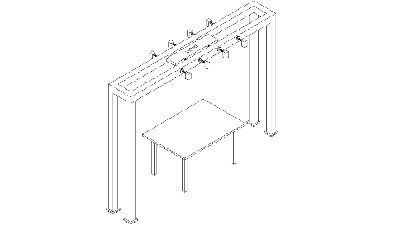Case Studies
One Part at a Time
Quick change-over automotive manufacturing inspection system based on Matrox Imaging Library and Matrox Meteor-II frame grabber
On conventional assembly lines, parts were mass produced. These large production lots involved extensive setup and configuration for manufacturing and inspection procedures. This isn't always the case today. Within the automotive industry, in particular, production lots as low as one are not uncommon. This new manufacturing standard required substantial changes to assembly and inspection procedures, and offered unique challenges to vision system architects.
Enter Avalon Vision Solutions. Four years ago, the company, based in Lithia Springs, (Atlanta) Georgia, began developing a new inspection system to accommodate these changes. Bill Nicol, VP, Sales & Marketing, explains. "Our automotive customers told us they would be sending multiple products down a common assembly line sequentially." This concept, assembling different parts on a common assembly line in the ordering sequence, is one of the primary requirements of an automotive production technique known as In-Line Vehicle Sequencing (ILVS). Implementing this new assembly procedure would complicate the operators' tasks, since the assembly line has to be configured for each part being assembled. In addition, automated inspection technology would be required to minimize errors in the part being assembled.
The result is Avalon's QualityStation with PlantVision 7. The QualityStation is a vision system with event-driven I/O architecture that permits one active program to accommodate several different product models. The setup for each product is stored in the QualityStation as an event. When the controller receives an input signal that identifies the event, it executes the inspection criteria for that event. The QualityStation "makes setups and SPC [Statistical Process Control] data acquisition and reporting much less complicated than it would be running different programs for each product model," adds Nicol.
The system
Plant-floor personnel sets up the inspection procedure through a touch-screen interface for the part that is about to be assembled. When the part is assembled, a trigger signal activates the cameras. A bar code is read by a separate scanner, which informs the system which part is to be inspected. Using the images captured by the cameras, the part is then inspected according to the procedures that were specified by the plant-floor technician. This will include locating, counting and measuring.
PlantVision 7 is the software component in the system. The procedures laid out in the touch-screen interface, called SmartWindows, use processing modules from the Matrox Imaging Library (MIL). The SmartWindows provide a user-friendly interface for complicated inspection tasks. For example, the pattern search tool uses pattern matching functions to identify specific features. The Locator tool uses blob analysis and histogram functions to determine the centroid of the object being inspected, so that it can be measured. Matrox Meteor-II frame grabbers are connected to as many as twenty-four cameras to capture the images required for inspection. All the results from the inspection procedures, including image data, are logged into the ProcessRx SPC database, which is accessible through the web.

The team behind the QualityStation vision controller and the PlantVision software had several challenges to overcome during its development. To begin, the HMI (human-machine interface) had to support different input types including bar codes, Ethernet protocol, and serial interfaces. Next, the Statistical Process Control (SPC) database needed to support large amounts of image data (from the multiple cameras), and needed to be accessed remotely. Finally, the large, open inspection cell had special lighting requirements; plant doors, skylights and cranes in the plant can create shadows. A near infrared (NIR) camera, called NightHawk, was developed from available camera components and customized to satisfy power zoom, focus and aperture requirements.
Avalon's future vision
Currently, a dozen QualityStation systems are in operation, including the ILVS automotive applications in Detroit and Monterey, Mexico. According to President and CEO Ed Kachnic, Avalon Vision Solutions plans to integrate additional SmartWindow tools to incorporate MIL's OCR and Geometric Model Finder modules. Avalon wants to use the OCR module to read labels for the various product ranges. With MIL's OCR module, reading model numbers on parts could be done without an additional sensor. Plans are also in the works to use the Geometric Model Finder for inspection procedures; Kachnic believes there will be several end-user applications suitable for the Geometric Model Finder.
What made Avalon decide to use Matrox Imaging products? Following a study of the various products on the market, Mr. Kachnic determined that Matrox products performed as well as those offered by other companies, but were more advantageously priced. Our cost-effective products and technical skills met Avalon's expectations. Mr. Kachnic adds, “We found it easier to work with the Matrox company. In our opinion, Matrox was the best choice. »
For more information contact Media Relations.
